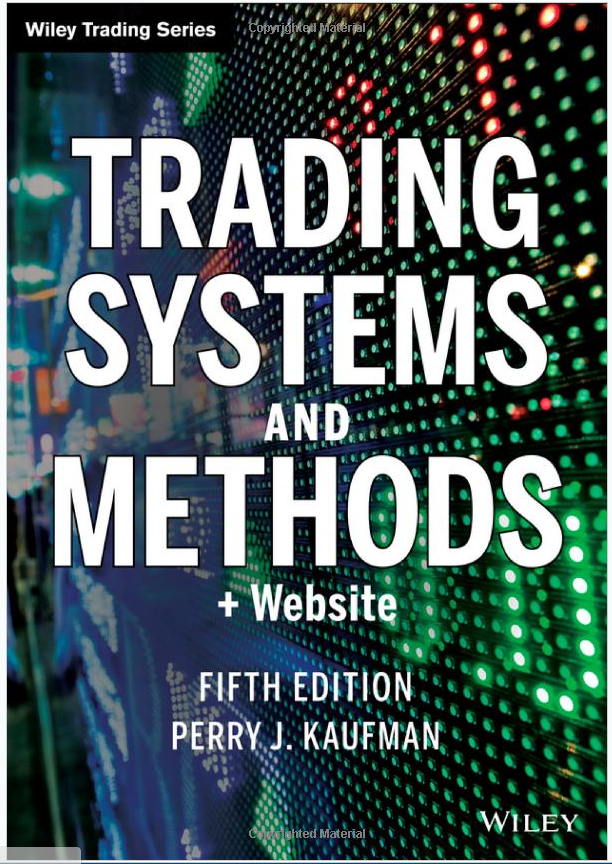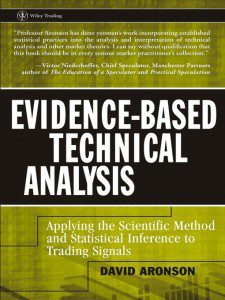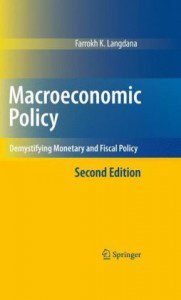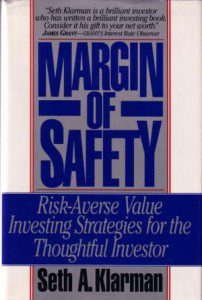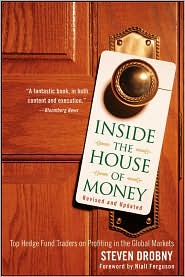Today, we’ll be looking at six more books that lift the lid on the workings of hedge funds, and the markets in general. We’ve got a few dense scholarly books – including one that will set you back thousands of dollars if you try to buy a paper copy – and a couple of compendiums of trader interviews to lighten things up slightly.
Trading systems and methods
by Perry J. Kaufman (Wiley)
For over thirty years now, Trading Systems and Methods has been one of the most popular trading textbooks, covering subjects such as systems, indicators, programs, and algorithms. Now in its fifth edition, the latest version is updated to take into account the market conditions and techniques of today, with special reference to trends, momentum, arbitrage, integration of fundamental statistics, and risk management..
This book explains a range of widely-used tools and techniques for trading, and also aims to provide the reader with an analytical framework for comparing various systems. It describes each technique, shows how it can be made to work, and offers up alternatives to each.
Also covered in the book is the basic mathematical and statistical concepts that underpin the designs and methodologies of trading systems, including risk measurement, data usage, and the way in which indices are created.
It also comes with a companion website (rather than a CD-ROM, as we might have seen in previous editions) that contains supplemental materials, spreadsheets, and Tradestation programs to aid the learning experience and help to keep things up to date.
Evidence-Based Technical Analysis: Applying the Scientific Method and Statistical Inference to Trading Signals
by David R Aronson
The thing about technical analysis is that it looks scientific, but it isn’t. In fact it’s a curious mixture of art and science that sometimes works, and sometimes doesn’t. Yet while there is undoubtedly some high-level mathematical thinking going into technical analysis, the vagueness of the terminology – and more importantly, the results – mean it is still considered a pseudo-science by those who aspire to more rigorous standards.
This is a disconnect that this book hopes to correct, by examining technical analysis from a scientific viewpoint. While it’s quite a critical viewpoint, it does illustrate quite well how it can work in certain situations and not in others. It’s basically an antidote to all those books that offer get-rich quick schemes via technical analysis techniques, giving traders a better balanced view of the true efficacy of the tools they are attempting to use.
Macroeconomic Policy: Demystifying Monetary and Fiscal Policy
by Farrokh K. Langdana
As the name suggests, this dissertation takes a user-friendly look at the driving forces behind macroeconomic policy. Without taking sides, Prof. Langdana gives coverage to all of the leading schools of thought on the topic of economics, including Classical, Keynesian, and Supply-Side.
These explanations are centred around real life macroeconomic events such as the Great Depression of the 1930s and the Asian Financial Crisis of the late 1990s. The clear diagrams and plain English makes these complicated concepts very easy to understand, and the imaginative prose of Prof. Langdana make this even more the case. As well as the diagrams, the author also makes use of simulated “news articles” to give the discussions some context.
Hedge Fund Market Wizards
by Jack D. Schwager
The phenomenal best-selling success of the original Market Wizards has spawned what can only have been a lucrative series of sequels for the author Jack Schwager and his publisher. Like all the previous incarnations of the book, it takes the format of a series of extended interviews with top traders, in this case from the world of hedge funds.
As a means of gaining insight into the modern techniques of hedge funds, Schwager’s latest offering is just as effective as its illustrious predecessors. And like the others, it has a broad appeal, from readers who want to manage their money more effectively to professional traders.
The massive changes in the financial industry over the past few years have only served to emphasise the point that the keys to success are always the same in any trading environment. These key attributes include discipline, adaptability, an open mind, an appreciation for the balance of risk versus reward, and the honesty to admit your mistakes and learn from them.
Margin of Safety: Risk-Averse Value Investing Strategies for the Thoughtful Investor
by Seth A. Klarman
The fact that people are willing to pay thousands of dollars for a copy of this out-of-print finance tome indicates just how highly valued the insights to be found within are. Originally published in 1991, this finance manual – which unsurprisingly ranks among the most-stolen library books, sells for upwards of $3k on Amazon and eBay, which makes your chances of tracking down a print version rather remote.
The insights held within, however, are available free of charge in .pdf form by clicking the link given above. The book itself was written by Seth Klarman, portfolio manager of The Baupost Group, and one of the most successful proponents of the value investing strategy. In this volume he aims to educate the reader on this concept, stressing the advantages of risk-aversion.
The first part of this book deals with the detail that separates investors from speculators, the nature of Wall Street, and how the culture of institutional ultimately results in a performance race where the client is always the loser, taking in a case study of the junk bond craze during the 1980s as an example.
The second part espouses the virtues of value investment, with a focus on risk and crucial it is to invest with a margin of safety. The final part offers up practical advice for following a value-investment process, in terms of where to find investment opportunities, how to invest in them, and several aspects of overall portfolio management.
As financial writers go, Klarman’s writing is disarmingly clear without being too simplistic or difficult. Also, he has an undeniable knack for bringing up telling examples to illustrate the points he brings up, adding an extra twist of reality to his writings.
Inside the House of Money: Top Hedge Fund Traders on Profiting in the Global Markets
by Steven Drobny
Via a series of Market Wizards-style interviews, Inside the House of Money lifts the lid on the usually opaque world of hedge funds, giving us a rare glimpse at how the highest paid money managers of today approach their craft. Throughout the book, Drobny demystifies the processes behing how these traders make billions of dollars on behalf of their investors, in terms of their strategies, their theories, and their approach to the markets.
As the cofounder of international macroeconomic research and advisory firm Drobny Global Advisors, Steven Drobny was able to call upon his enviable list of contacts to assemble a collection of interviews with some of the best minds in the business. These interviews bring into focus the experience of trading throughout some of the biggest upheavals in market history, giving readers the inside line on the operations of the traditionally secretive world of hedge funds.
Related Content:
I am a writer based in London, specialising in finance, trading, investment, and forex. Aside from the articles and content I write for IntelligentHQ, I also write for euroinvestor.com, and I have also written educational trading and investment guides for various websites including tradingquarter.com. Before specialising in finance, I worked as a writer for various digital marketing firms, specialising in online SEO-friendly content. I grew up in Aberdeen, Scotland, and I have an MA in English Literature from the University of Glasgow and I am a lead musician in a band. You can find me on twitter @pmilne100.

























